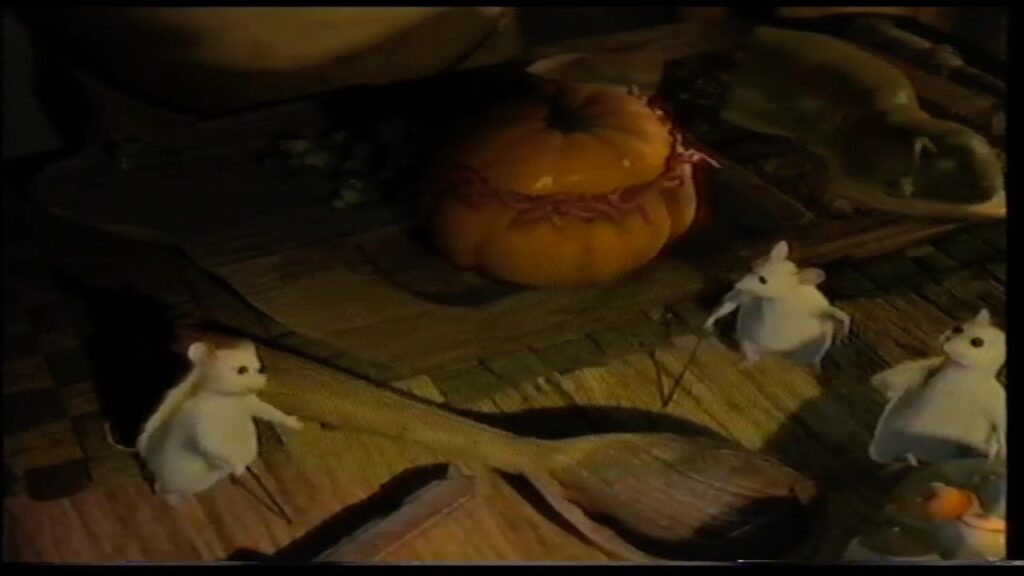
The Curious Case of the Three Blind Mice in the Shrek Franchise
The Shrek franchise, known for its irreverent humor and fairytale subversions, boasts a colorful cast of characters. Among these, the three blind mice hold a peculiar place, appearing in multiple films and spin-offs. While seemingly minor, their presence adds a layer of quirky charm and contributes to the overall comedic tapestry of the Shrek universe. This article delves into the role of the three blind mice within the Shrek franchise, exploring their appearances, comedic contributions, and the potential origins of their character design.
Appearances of the Three Blind Mice
The three blind mice are recurring characters throughout the Shrek films. They first appear prominently in the original Shrek (2001), where they are among the fairytale creatures evicted from their homes by Lord Farquaad. Their initial introduction establishes them as hapless victims, setting the stage for their comedic interactions with Shrek.
They reappear in subsequent films, including Shrek 2 (2004), Shrek the Third (2007), and Shrek Forever After (2010). While their roles remain relatively small, they often participate in group scenes and contribute to the overall chaos and humor. For example, in Shrek 2, they are seen at the Poison Apple tavern, adding to the atmosphere of fairytale debauchery. In Shrek the Third, they are part of the group accompanying Shrek on his quest to find Arthur Pendragon. And in Shrek Forever After, they appear in the alternate reality created by Rumpelstiltskin.
Beyond the main films, the three blind mice also make appearances in various Shrek-related shorts and television specials, further solidifying their status as recurring characters within the franchise. Their consistent presence, even in minor roles, demonstrates their enduring appeal and their ability to contribute to the comedic tone of the Shrek universe.
Comedic Contributions and Character Dynamics
The humor surrounding the three blind mice stems primarily from their literal blindness and their tendency to misunderstand situations. Their interactions often involve slapstick comedy and visual gags, playing on their inability to see what is happening around them. This is exemplified by their frequent collisions with objects and their misinterpretations of conversations.
Furthermore, their presence often serves as a comedic counterpoint to the more serious or dramatic moments in the films. While Shrek and Fiona are dealing with their personal struggles or facing external threats, the three blind mice provide lighthearted relief through their bumbling antics. This contrast enhances the overall comedic effect of the Shrek franchise.
Their relationship with other fairytale characters, particularly the other evicted creatures, also contributes to their comedic appeal. They are often seen interacting with characters like Pinocchio and the Gingerbread Man, creating opportunities for humorous exchanges and collaborative gags. Their shared experience of being displaced by Lord Farquaad bonds them together, forming a comedic ensemble that adds depth to the Shrek universe.
Origins and Inspirations
The three blind mice are, of course, based on the well-known nursery rhyme of the same name. The rhyme, believed to date back to the 17th century, tells the story of three blind mice who are chased by a farmer’s wife. The Shrek franchise adopts this familiar imagery, incorporating the mice into its fairytale world.
However, the Shrek version of the three blind mice differs significantly from the traditional nursery rhyme. In the rhyme, the mice are depicted as victims of violence, whereas in Shrek, they are portrayed as more lighthearted and comedic figures. This transformation reflects the franchise’s overall tendency to subvert and reinterpret traditional fairytale tropes.
The design of the three blind mice in Shrek is also noteworthy. They are depicted as small, furry creatures with large, expressive eyes, emphasizing their vulnerability and naivety. Their clothing and accessories further contribute to their individual personalities, adding another layer of comedic detail.
The Enduring Appeal of the Three Blind Mice
Despite their relatively minor roles, the three blind mice have become a beloved part of the Shrek franchise. Their comedic antics, combined with their familiar origins, have resonated with audiences of all ages. Their presence adds a touch of lightheartedness and whimsy to the films, contributing to the overall enjoyment of the Shrek experience.
The success of the three blind mice in Shrek demonstrates the power of well-executed comedic relief. Their ability to provide laughter and levity, even in the midst of more serious storylines, is a testament to their enduring appeal. They serve as a reminder that even the smallest characters can have a significant impact on the overall success of a franchise.
Conclusion: More Than Just Background Characters
In conclusion, the three blind mice are more than just background characters in the Shrek franchise. They are integral to the comedic fabric of the films, providing moments of levity and contributing to the overall sense of whimsy. Their appearances, comedic contributions, and familiar origins have made them a beloved part of the Shrek universe. While their roles may be small, their impact on the franchise is undeniable. They are a testament to the power of well-executed comedic relief and the enduring appeal of classic fairytale characters, even when reimagined in unexpected ways. The continued presence of the three blind mice across the Shrek franchise underscores their value as comedic assets and their contribution to the franchise’s overall success. The three blind mice, a staple of the Shrek movies, add a certain something that makes the films even more memorable. The Shrek franchise wouldn’t be the same without the three blind mice!
[See also: The Evolution of Shrek’s Humor]
[See also: The Best Fairytale Creatures in Shrek]
[See also: The Legacy of the Shrek Franchise]

